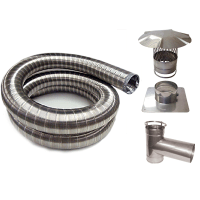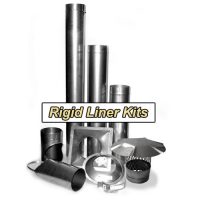Author: Jennifer MackInday
Many homeowners ask, “What can I do to reduce my heating bill?” Others have called us in the middle of winter complaining, “my house is drafty and cold – I just can’t get it warm enough”.
There are actually many things you can do to help improve your comfort, and save money on your heating bill this winter.
Make sure the damper on your fireplace is closed when not in use. Also, check your furnace filter often. You may find that you need to change your furnace filter more often in the winter.
Try rearranging your furniture! Heating systems that are “forced-air” send hot air through the house via vents in the floor and draw back in air through returns. Make sure all the vents and returns are unobstructed so that air can flow smoothly. Common items that block vents & returns are bookcases, beds, bureaus, drapes, and sofas. Moving furniture and household items away from vents & returns will help your furnace breath!
Since our skin temperature is 74 degrees, and most of us set our thermostats below 74 in the winter to economize, the air in our homes can feel cold. If you raise the humidity in your home, your skin won’t evaporate as much moisture, and you’ll feel warmer without changing the thermostat. By keeping the humidity in our homes consistent we improve the efficiency of our furnaces. Also, consider a humidification system attachment for your furnace. We added one to our furnace two years ago. The investment was $400, but well worth the money. Now, we don’t have to worry about keeping water in a humidifier on each level of our home, and everyone has noticed how much warmer it feels in the winter.
Cold air sinks, and warm air rises (I think that’s from 4th grade science). In the winter, warm air from the first floor tends to be sucked out the attic, or second floor. As this happens, cold air from the basement or crawlspace is actually pulled up into the first floor, leaving us colder than we like. This unequal distribution of heat also puts a strain on our furnace. Improving your distribution on the first floor and basement (if you have one) will make your whole house warmer, and your furnace won’t have to work as hard. Limit the flow of hot air upstairs, allowing more warm air into lower parts of the house, counteracting the push of cold air from the lowest level. Sounds complicated, but in a nut shell, close some vents upstairs and make sure vents downstairs are all open. This won’t cost you a penny!
Have your furnace inspected every year. We’ve all heard this before, and many people think it’s just a way for HVAC companies to generate additional revenue. While this job does typically cost about $125 (in the Midwest), it’s a solid home investment. Modern furnaces can be adjusted annually to improve efficiency. Also, a furnace inspection can spot light minor repairs that are less expensive than a big breakdown in the middle of the winter (in my case, this breakdown always happens in the middle of the night on Christmas!). When you sell your home, you can tell potential buyers that the furnace has been properly maintained annually – a big selling point!
Take advantage of an absolutely free source of energy – the sun! On sunny days, open your blinds and drapes to allow the sunlight to heat your home. At night and on cloudy days, keep your curtains drawn to retain heat from the furnace.
Every fee years, have your duct system check for leaks. According to the U.S. Department o Energy, the typical residential home heating system loses 25 to 40 percent of the energy put out by the furnace through leaky ducts. Wow! There are several ways to inspect your duct system – visually, with a blower test, and even infrared camera scans can find hidden heat leaks. You may have some seams that need tightened or repairs. In some cases, a duct check will find potential carbon monoxide leaks!
Another simply and affordable measure to take is installing a new, programmable thermostat. The simpler the thermostat, the less accurate. Older thermostats are often inaccurate as well. There are many affordable options in electronic thermostats on the market, most in the range of $50-$100. You’ll find they come with easy to follow installation instructions, or save yourself time and hire an electrician (this job should take 1 hour or less). These types of thermostats will not only help you keep warmer by providing more accurate reading, they’ll also help you save money by lowering the temperature automatically periodically (depending on how it’s set). Suggested settings are to lower the temperature 5 to 10 degrees when you are at work/school and at night. This could save you 10-30% on heating bills annually.
Even in mid-winter, taking a few steps to conserve resources and improve efficiency with your home heating system can save you lots of money.
FAST FACTS:
-Did you know that the technology used to design a typical new furnace is 3 times more complex than the computer system used to run Apollo 11!
-Lowering your thermostat 1 degree in the winter can save you 3% on your heating bill!
-The suggested winter thermometer setting is 68 degrees.
*Sources: Manfredini, Lou, Lou Manfredini’s House Smarts, New York: Ballantine Books, 2002 U.S. Department of Energy, Reducing Home Heating and Cooling Costs, Washington D.C.: Energy Information Administration, 1994.
Jennifer Mackinday is the founder of Free House Help, a FREE contractor referral service which brings together homeowners and high-quality home improvement contractors and professionals. Free House Help’s company mission is to provide a free service to homeowners while helping local contractors grow their businesses. Whether you are new to the area and don’t know who to call, or just don’t have time to search for qualified professionals, we can help. Visit http://www.freehousehelp.org for more information.






